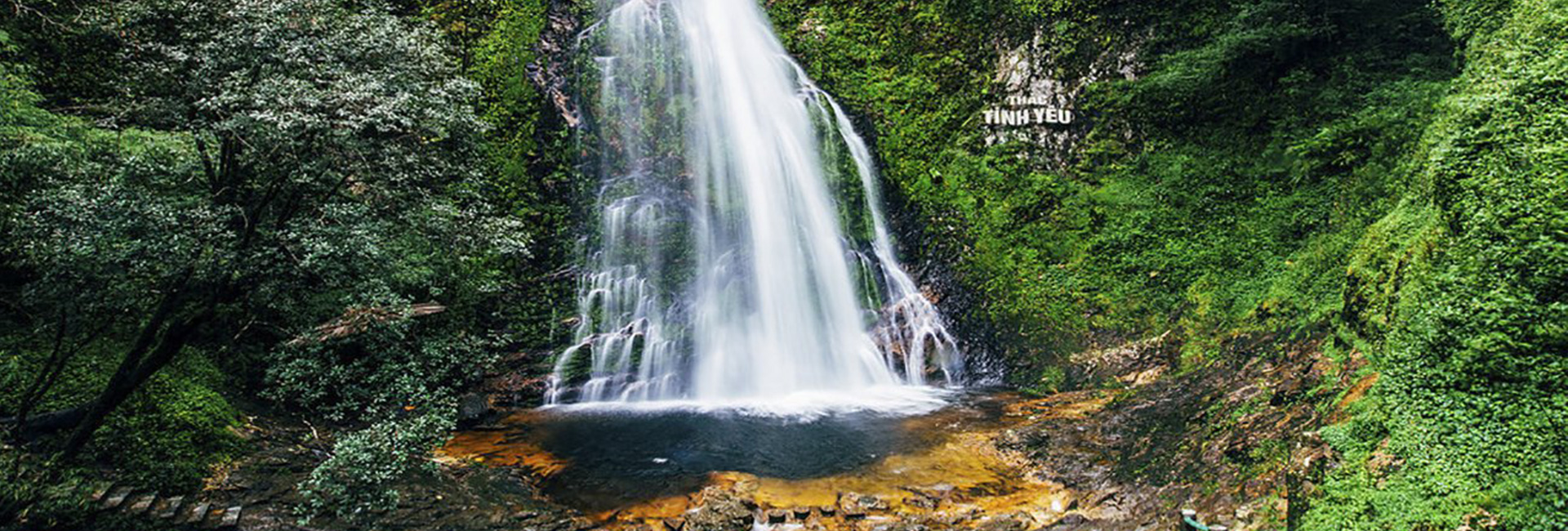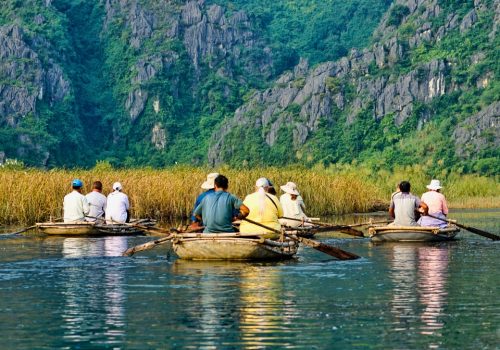If you are planning your Vietnam travel to Sapa, you should not miss visiting the stunning Sapa waterfalls. These natural wonders offer breathtaking views, fresh air, and a peaceful atmosphere. In this travel blog, you will find all the essential information to explore the best Sapa waterfalls, including locations, entrance fees, opening hours, and useful tips.
What you will find in this travel blog:
- Why you shouldn’t miss Sapa waterfalls when visiting Sapa?
- Top 4 must-see Sapa waterfalls
- Tips for visiting Sapa waterfalls
- Suggested Sapa itinerary including Sapa waterfalls
Why you shouldn’t miss Sapa waterfalls when visiting Sapa?
Sapa town is famous for its terraced rice fields and ethnic minority villages, but the waterfalls in this region deserve just as much attention. These natural wonders showcase the raw power and beauty of Vietnam’s highlands in ways that other attractions simply cannot match.
The waterfalls of Sapa provide a refreshing contrast to the cultural experiences you’ll have in the villages. They offer moments of natural wonder that complement the human stories you’ll discover throughout your trip.
Many travelers miss these incredible sites because they focus solely on trekking through rice terraces, but the waterfalls represent some of the most photographable and memorable spots in the entire region.
Here’s what you can expect from Sapa waterfalls:
- Stunning natural beauty with water cascading from great heights
- Cool, refreshing environments that provide relief from hiking
- Unique geological formations created over thousands of years
- Less crowded spots compared to the main town attractions
- Perfect photography opportunities with dramatic landscapes
- Clean mountain water flowing through pristine forest settings
- Accessible sites that don’t require extreme hiking abilities
- Natural swimming pools at the base of some waterfalls
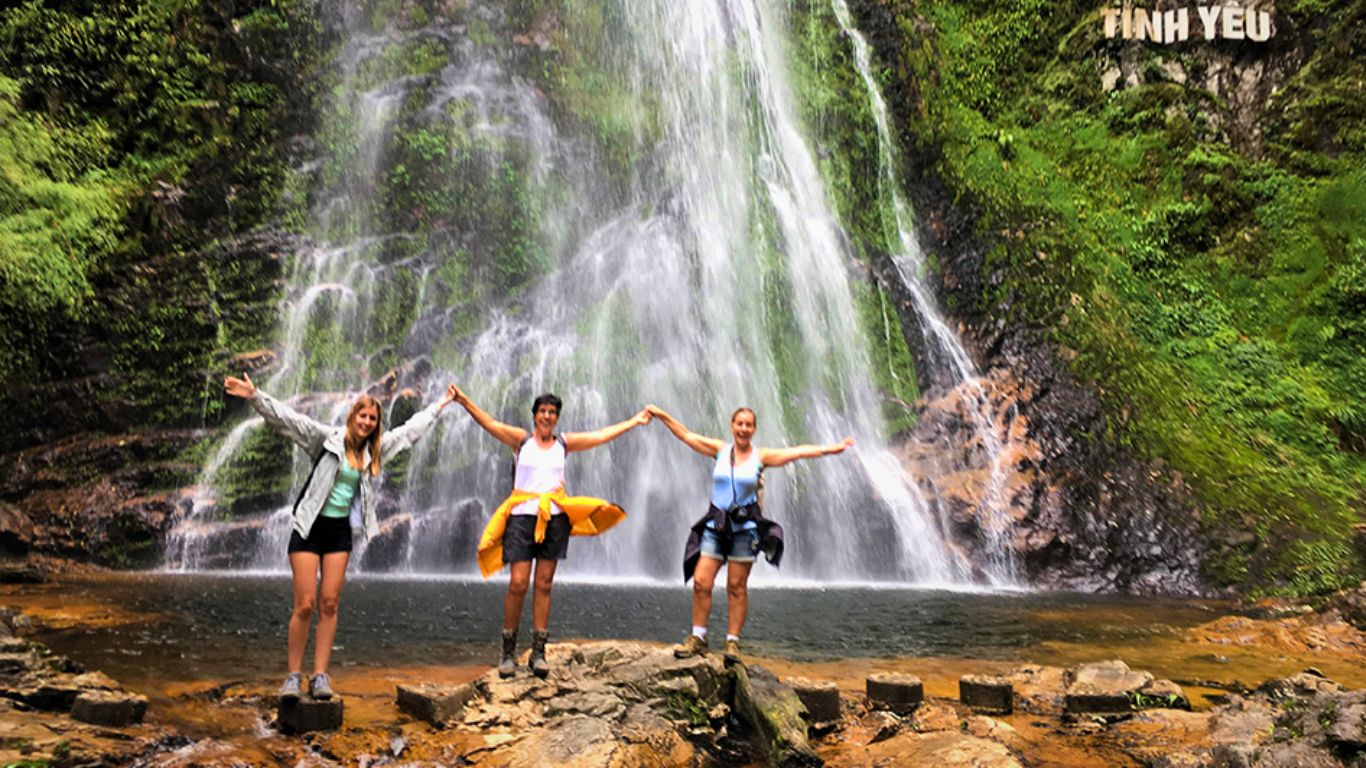
Top 4 must-see Sapa waterfalls
The Sapa region is blessed with numerous waterfalls, each with its own character and charm. While many visitors only hear about one or two famous falls, there are actually five major waterfalls that stand out for their exceptional beauty and accessibility. These natural wonders range from powerful, thundering cascades to gentle, multiple-tiered falls that wind through the mountains.
Located at different elevations and settings around Sapa, these five waterfalls offer varied experiences throughout the year. During the rainy season (May to September), they demonstrate their full power, while the dry season reveals interesting rock formations and makes some areas more easily accessible for swimming and exploration.
Silver Waterfall Sapa (Thac Bac)
- Location: 12 km from Sapa town on the road to Lai Chau, near Tram Ton Pass
- Entrance Fee: 20,000 VND (less than $1 USD)
- Opening Hours: 7:00 AM – 5:00 PM daily
Silver Waterfall takes its name from the way sunlight reflects off the water, creating a silver-like appearance as it falls nearly 200 meters through multiple tiers. This waterfall is one of the most accessible in the region, making it popular but also sometimes crowded.
The water source comes from the peak of Fansipan Mountain, Vietnam’s highest peak, which gives the falls a steady flow throughout the year. The viewing platform offers spectacular photo opportunities, especially in the morning when rainbows often form in the mist.
The surrounding forest adds to the natural beauty, with wild flowers blooming during spring months. The sound of the falling water creates a constant white noise that drowns out any traces of civilization, making this spot feel like a true escape into nature.

Love Waterfall Sapa (Thac Tinh Yeu)
- Location: 15 km from Sapa town, near Tram Ton Pass
- Entrance Fee: 70,000 VND (about $3 USD)
- Opening Hours: 7:00 AM – 5:30 PM daily
Love Waterfall earned its romantic name from a local legend about a fairy who fell in love with a flute player she met near this waterfall. The site lives up to its name with a truly magical atmosphere among dense forest.
You need to walk about 20 minutes through a beautiful forest trail to reach the waterfall. The path is well-maintained and relatively easy, making it accessible for most fitness levels.
The waterfall itself drops from a height of around 100 meters and collects in a clear pool at the bottom. The water is incredibly clear, and during warmer months, some visitors enjoy a refreshing dip, though the water remains quite cold year-round.
The best time to visit is during the morning when sunlight filters through the trees and creates magical light effects on the water. The site features several viewpoints that allow you to appreciate the falls from different angles.
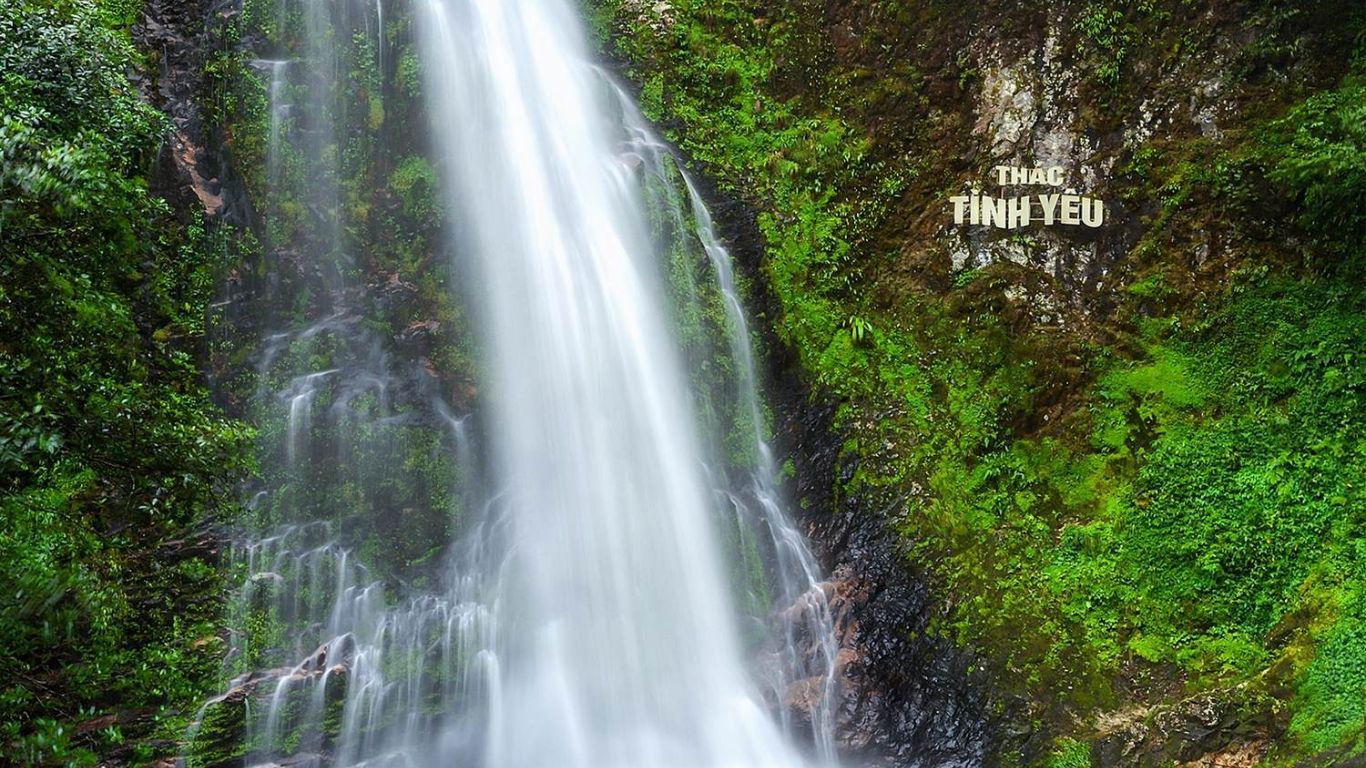
Tien Sa Waterfall Sapa
- Location: 17 km from Sapa town, in Sin Chai village
- Entrance Fee: 30,000 VND (about $1.25 USD)
- Opening Hours: 6:00 AM – 6:00 PM daily
Tien Sa Waterfall is one of the lesser-known but equally impressive waterfalls in the region. The name means “Fairy Mist” in Vietnamese, referring to the constant spray that creates a mystical atmosphere around the falls.
This multi-tiered waterfall stretches over 100 meters in height and features several smaller cascades that join together. The waterfall is surrounded by ancient trees and diverse vegetation, making it a haven for nature lovers and bird watchers.
What makes Tien Sa special is the relative lack of development around it. There are basic facilities, but the area maintains a natural, unspoiled feel that’s becoming rare around other tourist sites in Vietnam.
The path to the waterfall includes stepping stones across smaller streams and wooden bridges, adding to the adventure feel of the visit. Local Hmong people sometimes sell handicrafts near the entrance, offering authentic souvenirs from your trip.
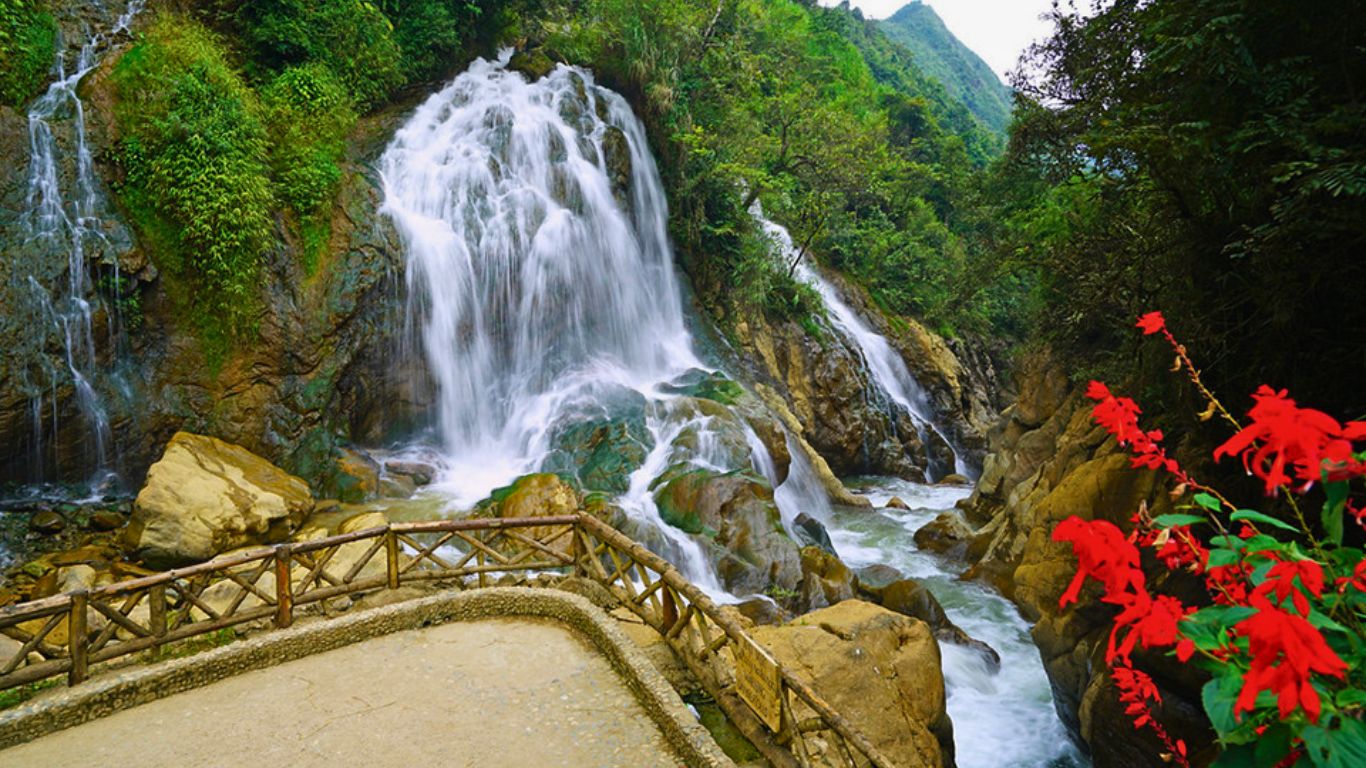
Ta Lam Waterfall
- Location: 25 km from Sapa town, near Ta Van village
- Entrance Fee: 50,000 VND (about $2.10 USD)
- Opening Hours: 8:00 AM – 4:30 PM daily
Ta Lam Waterfall is the most remote of the major Sapa waterfalls but rewards you with spectacular views and a genuine wilderness experience. This waterfall cascades down approximately 150 meters through several stages.
The journey to Ta Lam involves a moderate trek through bamboo forests and across small streams. The trail is less developed than those leading to other waterfalls, making it an adventure in itself and ensuring smaller crowds.
The water at Ta Lam comes directly from mountain springs, making it incredibly pure. The falls create several natural pools, with the largest at the bottom being suitable for swimming during warmer months.
The surrounding area is home to diverse plant species, including rare orchids that bloom seasonally. This biodiversity makes Ta Lam not just a scenic spot but also an important ecological area worth preserving.
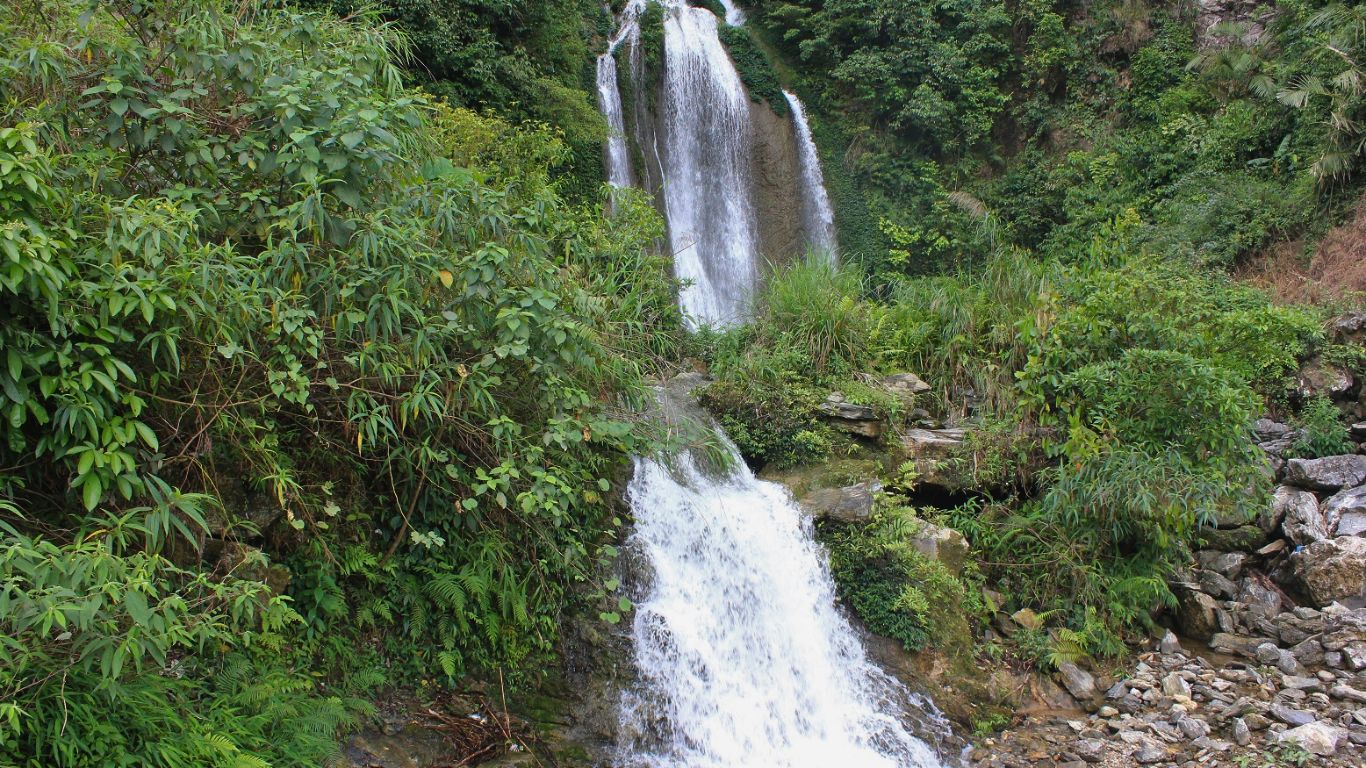
Tips for visiting Sapa waterfalls
- Wear proper hiking shoes with good grip as trails can be slippery, especially during or after rain
- Bring a waterproof bag to protect cameras and phones from spray and unexpected rain
- Visit early in the morning (before 9 AM) to avoid crowds and catch the best lighting for photos
- Pack a light raincoat or poncho, as weather in Sapa can change quickly
- Carry enough water and some snacks, as options for purchasing these items are limited at some falls
- Apply insect repellent before setting out, particularly during summer months
- Consider hiring a local guide who knows the best viewpoints and can share cultural context
- Respect local customs and ask permission before photographing local people near the waterfalls
- Bring small denominations of Vietnamese Dong for entrance fees and local purchases
- Allow extra time in your schedule, as the natural beauty might inspire you to stay longer than planned
- Avoid visiting during heavy rain periods (July-August) when paths can become dangerous
- Check weather forecasts before setting out, as some falls are best viewed in certain conditions
- Bring a change of clothes if you plan to swim at any of the falls
- Don’t forget sun protection, even on cloudy days the mountain sun can be strong
Suggested Sapa itinerary including Sapa waterfalls
Planning a trip that includes Sapa’s waterfalls requires thoughtful scheduling to balance natural wonders with cultural experiences. The following three-day Sapa itinerary suggestions help you make the most of your time in this highland paradise without rushing through attractions or missing key sights.
Day 1: Explore Sapa Town and Nearby Areas
- Arrive in Sapa and visit Sapa Market.
- Explore Cat Cat Village and Tien Sa Waterfall.
- Enjoy a local dinner in Sapa town.
Day 2: Discover Sapa Waterfalls and Nature
- Visit Silver Waterfall and Love Waterfall in the morning.
- Have lunch at a local restaurant.
- Visit Ta Lam Waterfall or Tac Tinh Waterfall in the afternoon.
- Return to Sapa town for a relaxing evening.
Day 3: Trekking and Cultural Experience
- Take a trekking tour to Ta Van Village.
- Visit local homestays and experience ethnic minority culture.
- Return to Hanoi or continue exploring Sapa.
Above is just a recommendation. If you want to find more personalized Sapa tour options or need assistance with transportation and accommodation, you can contact us for further details and arrangements tailored to your specific interests and timeframe.
Sapa waterfalls are among the best natural attractions in the region. Whether you are looking for adventure, relaxation, or beautiful landscapes, these waterfalls have something to offer. Plan your visit well, follow the tips, and enjoy your time in Sapa!
Mo Nguyen – From Vietnam Travel Online
Other tours you might consider
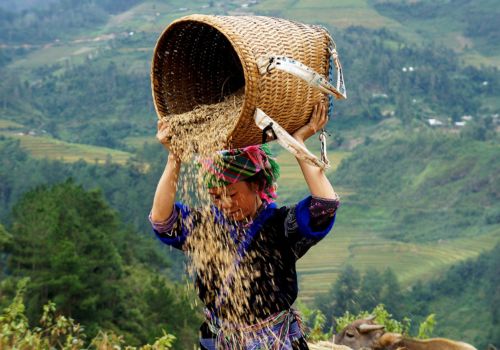
 Ha Giang - Quan Ba - Dong Van - Meo Vac - Hoang Su Phi - Bac Ha - Sapa
Ha Giang - Quan Ba - Dong Van - Meo Vac - Hoang Su Phi - Bac Ha - Sapa - Cultural, history & local learning
- Photography interest
- Eco & nature lovers
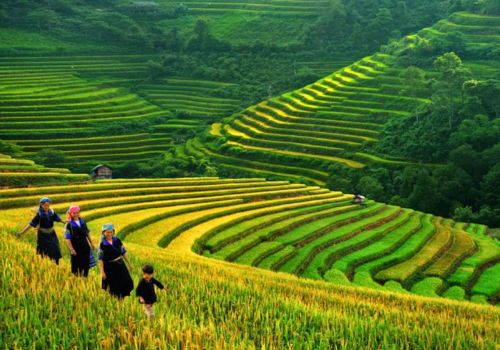
 Hanoi – Halong Bay – Sapa
Hanoi – Halong Bay – Sapa - Cultural, history & local learning
- Photography interest
- Leisure & a bit of everything


